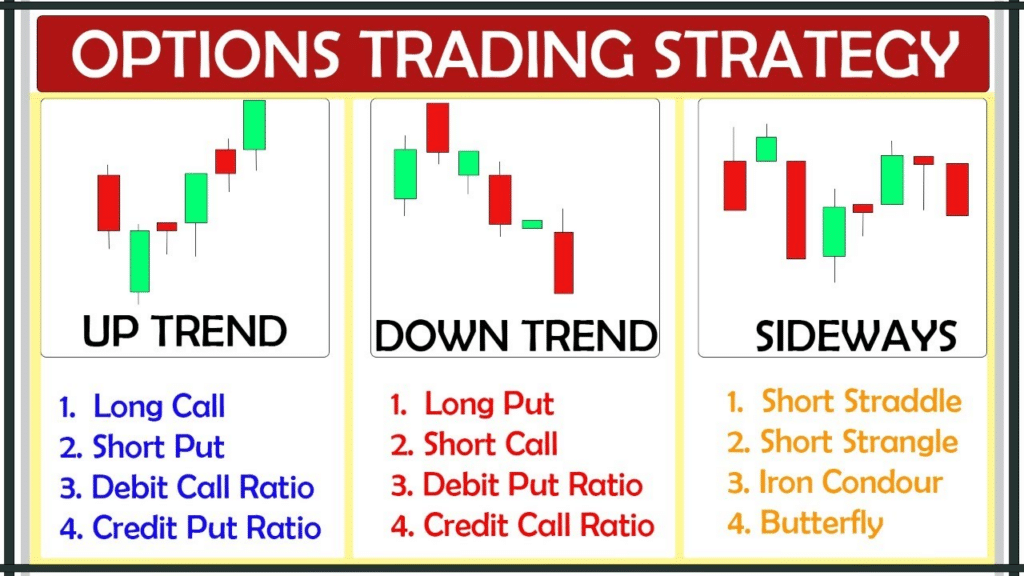Have you ever wondered how seasoned traders navigate the volatile world of options, turning fleeting market movements into tangible profits? Day trading options, a high-risk, high-reward endeavor, demands a keen understanding of market dynamics, a disciplined approach, and a well-defined strategy. It’s not just about placing bets, but about understanding the complex interplay of probability, time, and price fluctuations.

Image: investgrail.com
Options contracts, granting the right but not the obligation to buy or sell an underlying asset at a predetermined price, offer a leveraged opportunity for both profit and loss. Day traders use this leverage to amplify returns, but it comes with a caveat: a misstep can amplify losses too. This article delves into the fascinating world of day trading options, exploring various strategies, risk management techniques, and the tools needed to succeed.
The Fundamentals of Options Trading
Before diving into strategies, it’s crucial to grasp the basics of options trading.
- Call Options: A call option grants the right to buy an underlying asset at a specified price (the strike price) before the expiration date. If the asset price rises above the strike price, the call option becomes profitable.
- Put Options: A put option grants the right to sell an underlying asset at a specified price (the strike price) before the expiration date. If the asset price falls below the strike price, the put option becomes profitable.
- Premium: The price paid for an option contract is known as the premium. It’s essentially the cost of acquiring the right to exercise the option.
- Expiration Date: Options have a finite lifespan defined by an expiration date. After this date, the option expires worthless if it has not been exercised.
Day traders, focusing on short-term price movements, typically use options with near-term expirations, maximizing leverage and exploiting quick market shifts.
Popular Day Trading Options Strategies
The world of options trading offers a multitude of strategies, each with its own risk profile and potential for profit. Let’s explore some popular day trading options strategies:
1. Covered Calls:
This strategy involves selling a call option on a stock you already own (covering the obligation). You benefit if the stock price stays flat or rises slightly, receiving the premium but potentially losing upside potential if the stock price surges significantly. The key to success lies in carefully selecting strike prices and expirations to balance risk and reward.

Image: pdf7d2r8reginald.blogspot.com
2. Cash-Secured Puts:
This strategy involves selling a put option, which grants the buyer the right to sell you the underlying stock at a specific price. You collect the premium, hoping the stock price stays above the strike price. If the price falls, you’re obligated to buy the stock at the strike price, potentially losing money. This strategy suits conservative traders who aim for steady income generation.
3. Bullish Vertical Spreads:
This is a multi-leg strategy involving buying one call option at a lower strike price and selling another call option at a higher strike price, both with the same expiration date. It captures potential upside while limiting the risk. The spread width (difference between strike prices) determines the potential profit and loss.
4. Bearish Vertical Spreads:
This strategy, similar to the bullish vertical, involves buying a put option at a lower strike price and selling another put option at a higher strike price. It benefits from a declining stock price while mitigating losses.
5. Iron Condors:
This advanced, complex strategy involves four options: buying a call and a put at lower strike prices and selling a call and a put at higher strike prices. This creates a defined profit zone and capped losses, suitable for neutral market outlooks.
Risk Management: The Foundation of Success
Day trading options is inherently risky, and without disciplined risk management, those profits can vanish quickly. Here’s a framework for navigating this risk:
1. Define Risk Tolerance:
Understand your risk appetite and how much you’re willing to lose on any trade.
2. Set Stop-Loss Orders:
Stop-loss orders are crucial for limiting potential losses. They automatically exit a position when the price reaches a predetermined level, preventing catastrophic losses.
3. Diversify Your Portfolio:
Don’t put all your eggs in one basket. Spread your investments across various assets and options strategies to mitigate risk.
4. Capital Management:
Never risk more than you can afford to lose. Only allocate a portion of your capital to day trading and avoid over-leveraging.
Tools for Day Trading Success
Day trading options requires specific tools and insights to navigate the fast-paced market dynamics.
1. Reliable Brokerage Platform:
Choose a reputable platform offering real-time data feeds, charting tools, order execution speed, and robust research capabilities.
2. Market Analysis Software:
Tools like technical analysis platforms can illuminate trends, support levels, and resistance levels, providing insights into potential price movements.
3. News and Social Media Resources:
Stay up-to-date on market news, regulatory updates, and real-time sentiment through trusted news sources and social media channels.
Day Trading Options Strategies
Conclusion: The Path to Mastery
Day trading options is a challenging but rewarding pursuit that demands a solid understanding of market dynamics, disciplined execution, and constant learning. This article has unveiled some key strategies, risk management techniques, and essential tools for success. It’s important to emphasize that success in options trading doesn’t happen overnight; it requires dedicated practice, continuous learning, and a commitment to mastering the intricacies of this high-stakes space.






